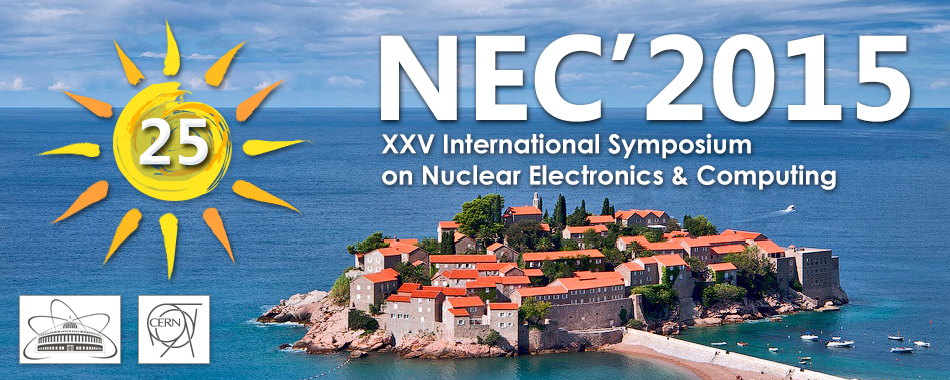Conveners
Detector & Nuclear Electronics
- Ivan Vankov (Institute for Nuclear Research and Nuclear Energy, Bulgarian Academy of Sciences)
Detector & Nuclear Electronics
- Igor Semenov (Project Center ITER (Russian Domestic Agency ITER))
Dr
Lubomir Dimitrov
(Institute for Nuclear Research and Nuclear Energy)
29/09/2015, 10:00
The higher energy and luminosity of future High Luminosity (HL) LHC, determines a significant increasing of the radiation background around the CMS subdetectors, and especially in the higher pseudorapidity region. Under such heavy conditions, the RPC (used in muon trigger) most probably could not operate effectively. A possible better solution is the so-called GEM (Gas Electron Multiplier)...
Dr
Oleg Strekalovsky
(JINR)
29/09/2015, 10:20
High speed switched capacitor waveform digitizers are increasingly used in studies of rare events in nuclear physics. Digitizers complement the classic analog input systems or completely replace it. To launch the start of registration required trigger signal that determines an interesting event.
Discriminator's threshold levels are set individually via USB 2.0. Trigger signal generating...
Mr
Mikhail Buryakov
(JINR, LHEP)
29/09/2015, 10:35
A conceptual design of the MultiPurpose Detector (MPD) is proposed for a study of hot and dense baryonic matter in collisions of heavy ions over the atomic mass range A = 1–197 at a centre-of-mass energy up to √(s_NN ) = 11 GeV (for Au79+). The MPD experiment is foreseen to be carried out at a future JINR accelerator complex facility for heavy ions – the Nuclotron-based Ion Collider fAcility...
Mr
Vladimir Borisov
(JINR)
29/09/2015, 10:50
The Nuclotron-based Ion Collider fAcility (NICA) is the new accelerator complex being constructed at JINR. More than 250 superconducting (SC) magnets will be assembled and tested at the new test facility in the Laboratory of High Energy Physics JINR. Magnetic measurements system for NICA booster dipole magnets was built and commissioned at late 2013. First cryogenic measurements of ...
Aleksey Kuznetsov
(JINR)
29/09/2015, 11:25
There have been developed some setups for super heavy elements synthesis in FLNR including multi-detector spectrometers of nuclear reaction products. These setups are VASSILISSA, DGFRS (Dubna Gas Filled Recoil Separator), MASHA etc. The number of channels in such spectrometers is growing up continuously and now is about several hundreds.
Electronics for such spectrometers should be...
Dr
NIKOLAY GORBUNOV
(JINR)
29/09/2015, 11:55
The purpose of the TUS space experiment is to study cosmic rays of ultrahigh energies by registration of the generated extensive air showers using a satellite in space. The concentrator located on the satellite is made in the form of a Fresnel mirror directed toward the earth's atmosphere, and at its focus there is a photodetector. The angle of view of the mirror is ± 50, that for the set...

